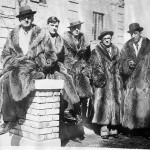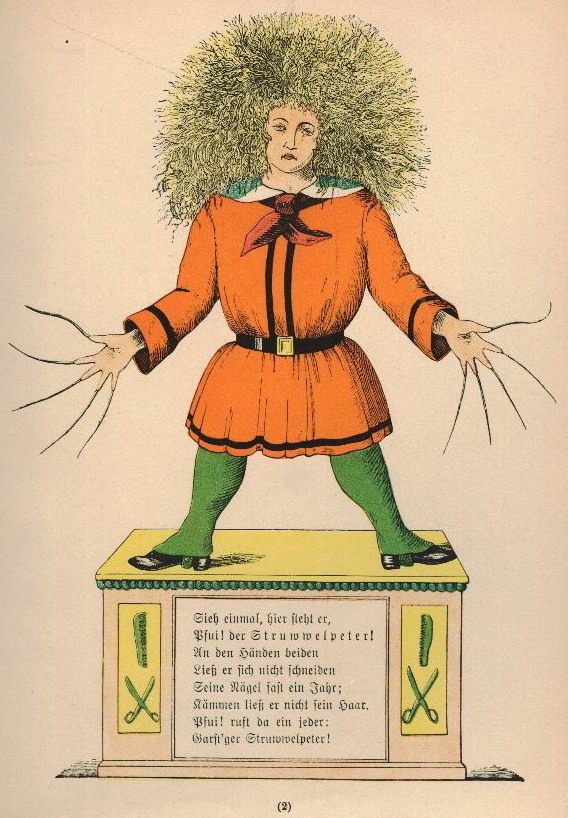
It’s “lights out” for boring bedtime stories. Bye bye to the tired tropes of fairytale princesses, and errant children who somehow pull off the craziest stunts unscathed – I mean, can we just point out that Hansel and Gretel were eating someone’s house? Today, we’re taking a deeper dive into some second-tier fables that didn’t make it to the Disney drawing boards. Figures and legends from around the world that run a shade darker, to deliver a different kind of spice to your dreams tonight. From a princess who spits up diamonds, to Germany’s anti-Santa Claus; from the original, super goth ‘Headless Horseman’ to a psychotic Japanese raccoon, let’s crack open the book on our favourite, f*cked up fairytales of yore…
The Anti-Santa Claus
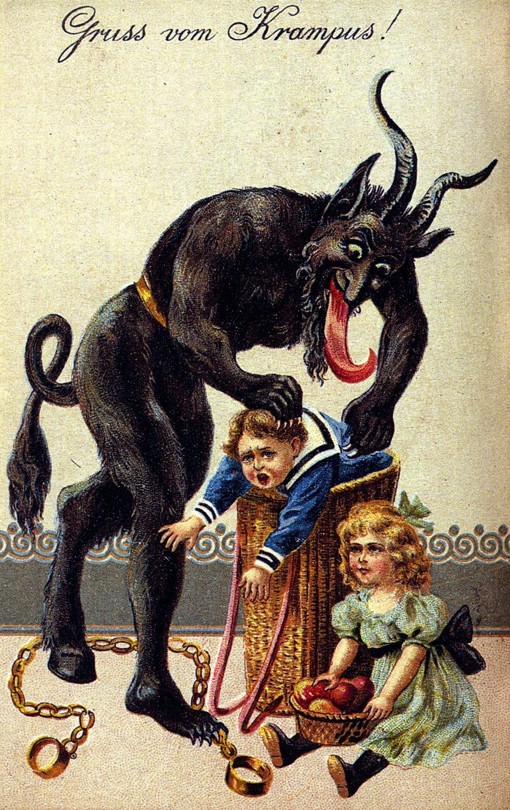
Tis’ the season to talk about Krampus, the German creature who’s basically Santa Claus’s creepy foil. Today, kids are often told to expect either presents or coal in their stocking on Christmas. But if you were in a German household in the Alps 200 years ago, naughty kids were told they’d get abducted by a devilish figure named Krampus. Which everyone seems kind of chill with, given the popularity of Gruß vom Krampus! (Greetings from the Krampus) greeting cards…
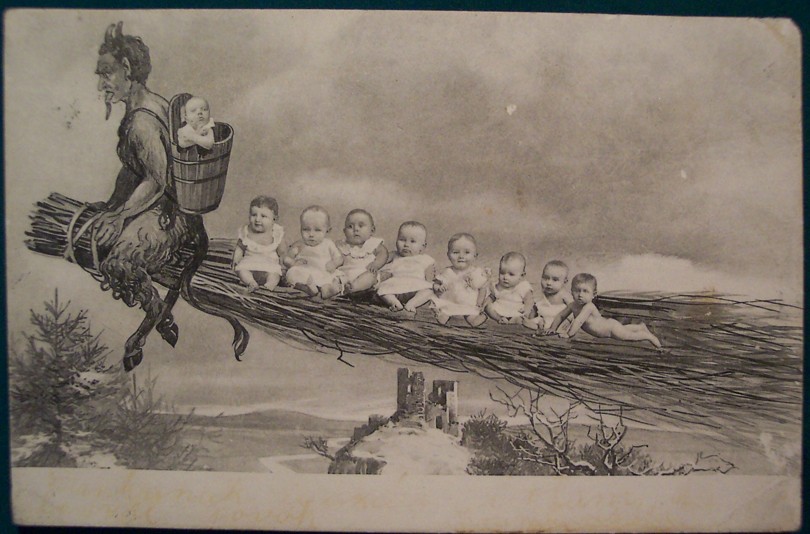
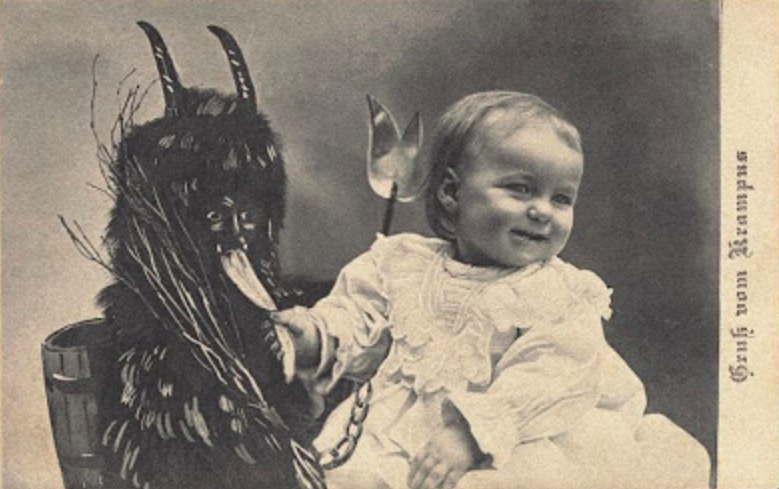
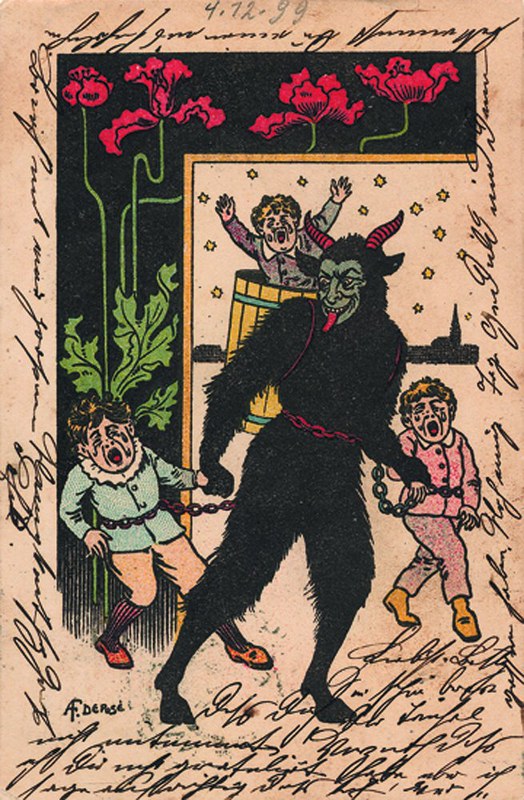
Krampus is described as “half goat, half demon” and makes the rounds with Santa on Christmas, usually carrying a big basket to stuff with disagreeable babies, or a bundle of twigs for whipping and/or handing out with lumps of coal. Given his appearance, Krampus is believed to have some ancient Alpine-Pagan origins, harkening back to a time when Christmas was simply “Yule”, and the horned god of the forest was worshipped.

A Krampus craze still sweeps through German-speaking countries every winter, with various Krampusnacht (Krampus Night) parades taking place on December 5th, when men and women dress up like the hairy beast…
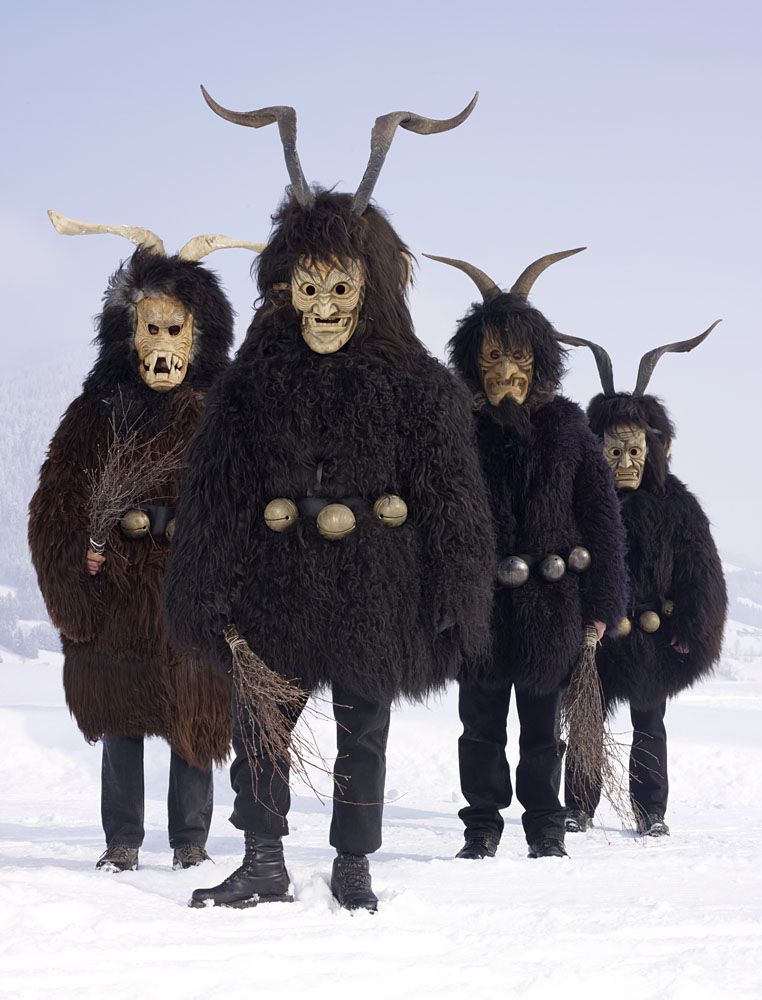
The Original “Headless Horseman” (Wants to Whip You with a Human Spine)
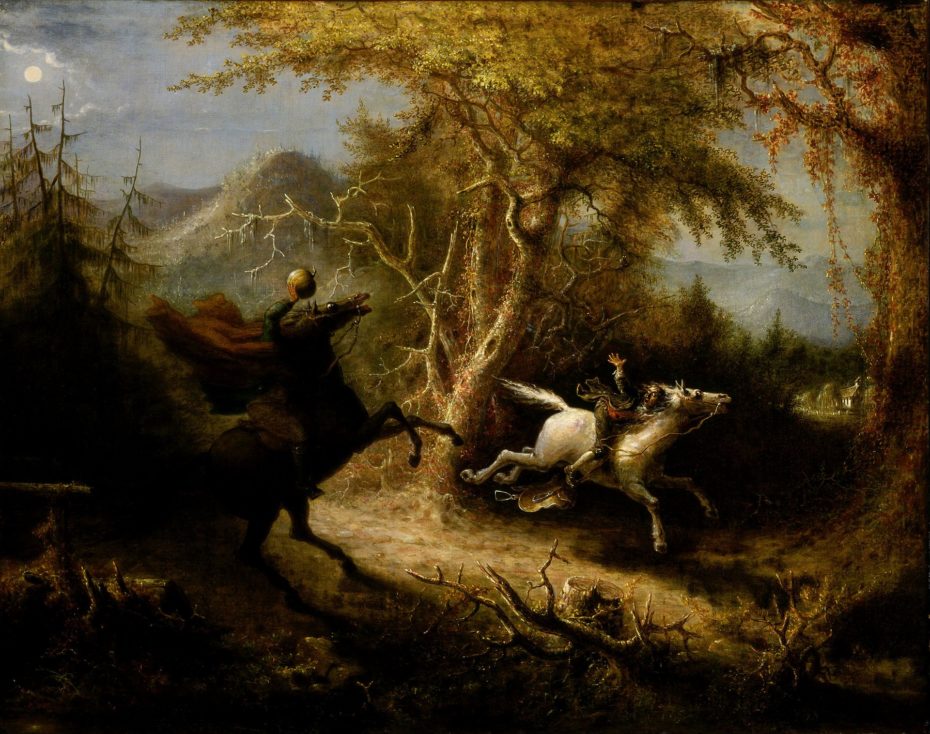
The devil’s in the details for the story of the “Dullahan” (Irish for “being without a head”), which makes The Legend of Sleepy Hollow look like amateur hour. Originating in ancient, southern Ireland, the legend of the Dullahan tells of a headless faerie rider who can be male (or female!) and lingers on the back country roads, collecting human souls. In some versions, the Dullahan patrols the country while cloaked in black, holding not a pumpkin, but his or her own rotting head. In other versions, they ride a chariot made of human flesh and bones, pulled by six skeleton-horses. In every story, they’re very into beating victims with a whip made from a human spine. Certainly more #GothLife than Washginton Iriving’s tale…
Japan’s Killer Raccoon & Heroic Rabbit
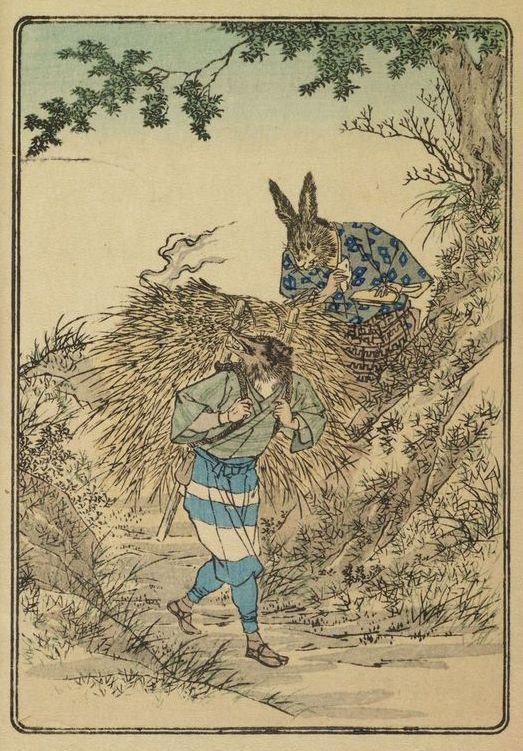
Now, we hop over to the Edo Period (1603-1868) in Japan, where psychotic raccoon dogs roam free. The story of Kachi Kachi Yama (かちかち山) – “kachi kachi” being onomatopoeic for a crackling fire – tells of the fatal battle between a sadistic tanuki (a real animal that’s a kind of hybrid raccoon-dog) and a rabbit. The drama unfolds when a farmer captures an enchanted tanuki in his field, and ties it up in his house while his wife makes mochi. The creature sweet talks the wife into setting him free, proceeds to kill her, and then makes a soup out of her flesh. The tanuki shapeshifts into the wife’s form just as the farmer returns, feeds him soup, only to revert back to his form and reveal his evil doings. Luckily, a rabbit that the farmer had once befriended decided to seek vengeance…
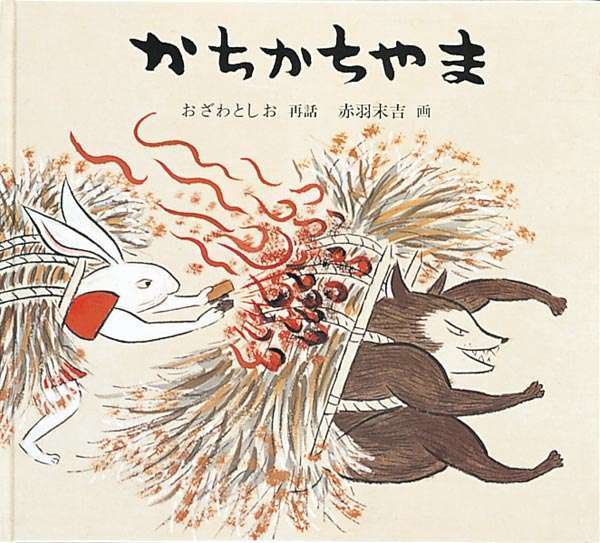
The rabbit gets real shady. First, he drops a beehive onto the tanuki’s head, and when he offers to treat his wounds, instead rubs chilly peppers into his skin. He then stalks the tanuki, watching as he carries his kindling for the night on his back … and decides to light him on fire. The rabbit finally challenges the tanuki (who is somehow not yet dead) to a race across a lake in a boat building competition. The clever rabbit carves a fallen tree trunk, and wins, while the tanuki’s mud raft dissolves and leaves him to drown.

We’re not quite sure what the moral of the story is here. Don’t trust raccoons? Take a canoe workshop? In Japan, the story has endured as a kind of template for pursuing justice. The fable is so popular, that it’s found in action figures and fabric swatches.
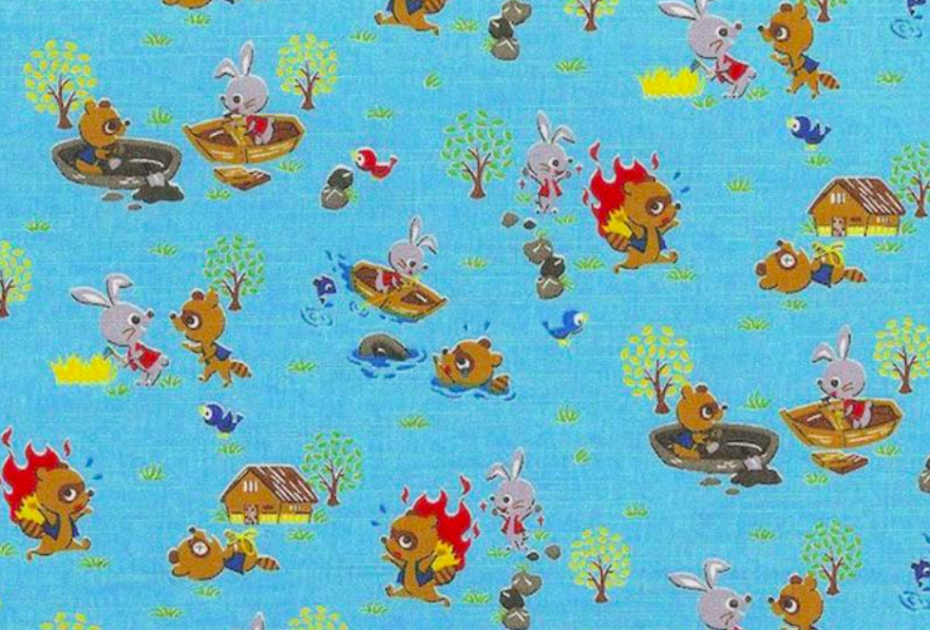
There’s even a ropeway attraction, “Kachi Kachi Lookout”, with cartoon statues of the rabbit and raccoon. It’s at the actual location where the story is said to take place…

Throwing Up Diamonds and Toads in the other ‘Cinderella’
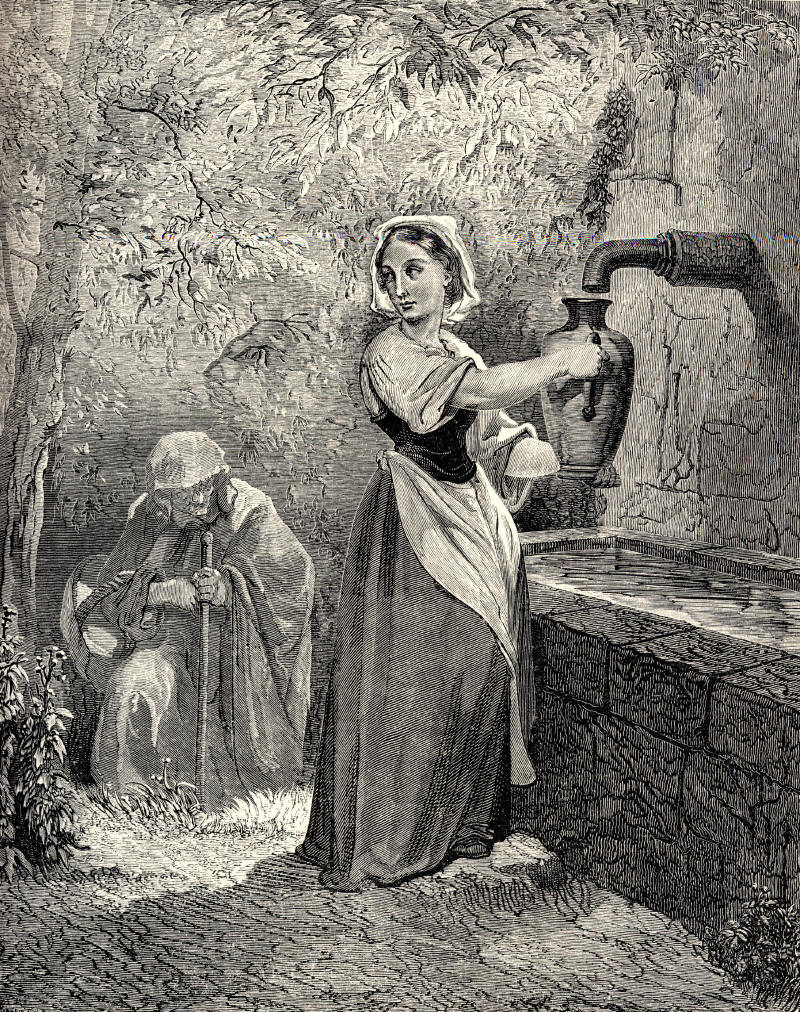
Leave it to the French to inject a frightening fable with a bit of glamour. Diamonds and Toads (1695) was written by Charles Perrault, who has a pretty solid fairytale pedigree: he also authored Little Red Riding Hood, Sleeping Beauty, and Cinderella – the last of which garnered a lot of comparison to Diamonds and Toads, which tells the story of a cruel widow who prefers her mean biological daughter, Fanny, to her stepdaughter, Rose. Sound familiar?
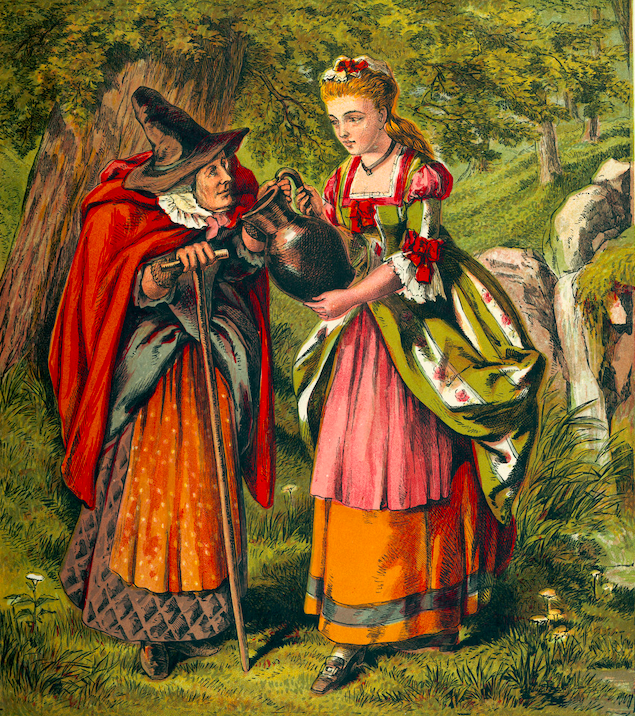
The kindness of the two daughters is tested by a fairy in the woods, who asks for a drink of water when disguised as a hag. Rose obliges, Fanny does not, and both are rewarded accordingly. Rose is blessed with the gift of spilling flowers and diamonds from her mouth every time she speaks….
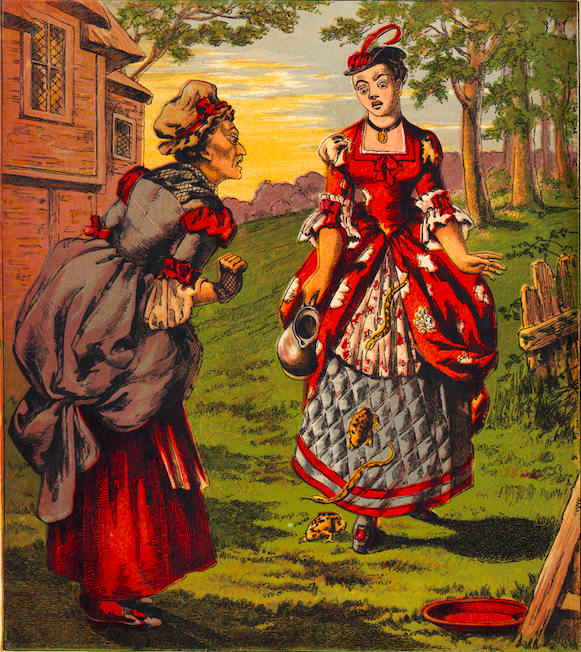
While Fanny throws up toads and vipers…
Now Fanny obviously gets the short end of the straw, but spitting up diamonds is kind of a weird, back-handed reward. Also, at the end of Cinderella the Stepsisters and their mother receive some pity, but in this tale, both the Stepmother and Fanny perish in the woods (the disgusted Stepmother kicks Fanny out, both die alone). Rose, however, (also kicked out by her Stepmother) bumps into a Prince, and lives happily ever after.
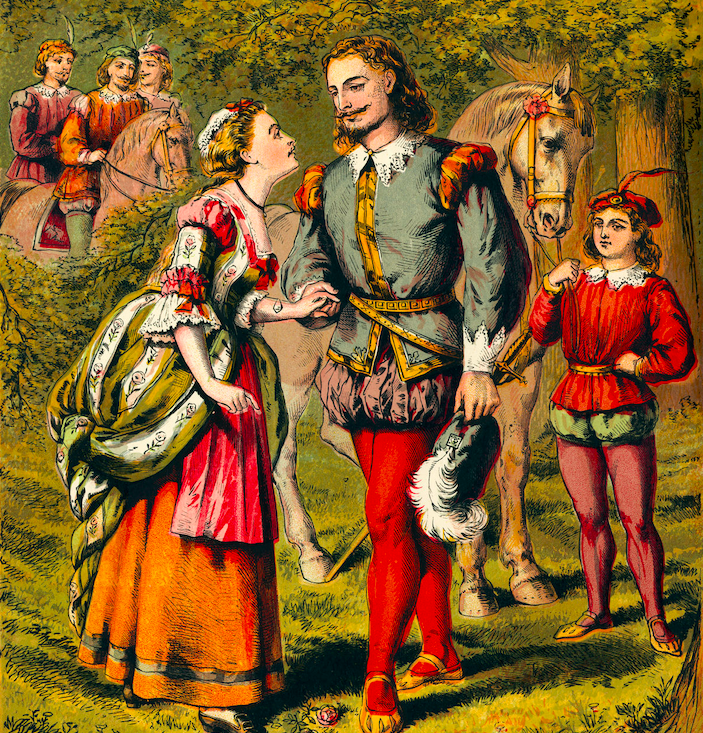
We can see how Cinderella had more cultural staying power – but we’d still love to see the diamond-barfing played out in live action.
Der Struwwelpeter (Shock Headed Peter)

The only thing more terrifying than Der Struwwelpeter, is the fact that it was written by a father for his 3-year-old son. In 1845, the German physician Heinrich Hoffman dreamt up his own collection of cautionary tales, as he found those on the market rather lacklustre. Arguably our most visually startling story (eponymous with the collection’s title), Struwwelpeter is all about the importance of good hygiene. Basically, a young boy called Struwwelpeter (“shock headed Peter”) lets his hair and fingernails grow to unmanageable lengths. Public shaming ensues.
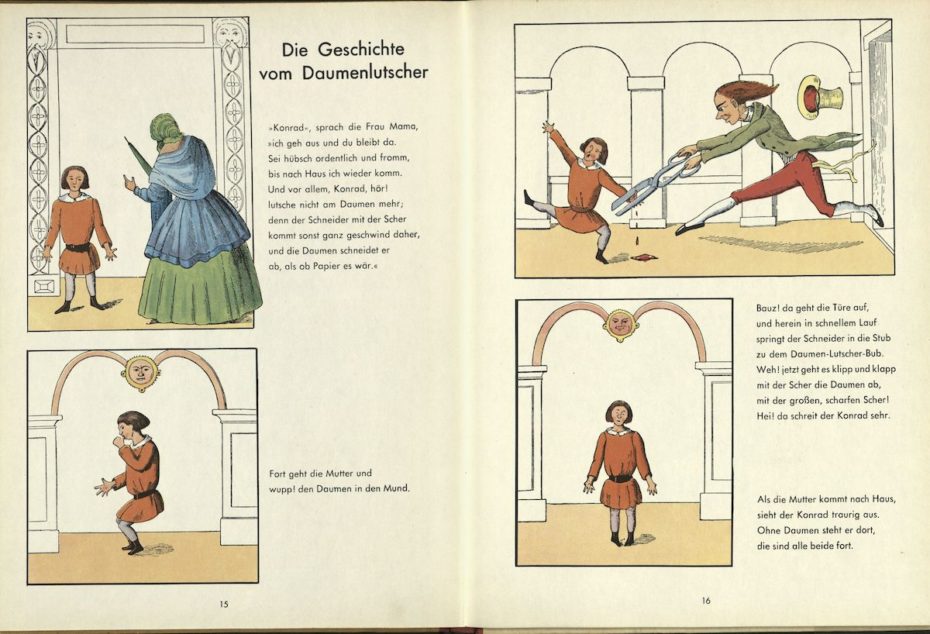
There are nine other tales in the collection, which chronicles everything from the dangers of thumb sucking (you’ll get those fingers chopped off!) to a girl who plays with matches and burns herself to death; a kid who decides to no longer eat soup, and starves to death, and a boy who steps outside in a storm and gets whisked away by the wind. Pretty much all of them end in some form of physical torture.
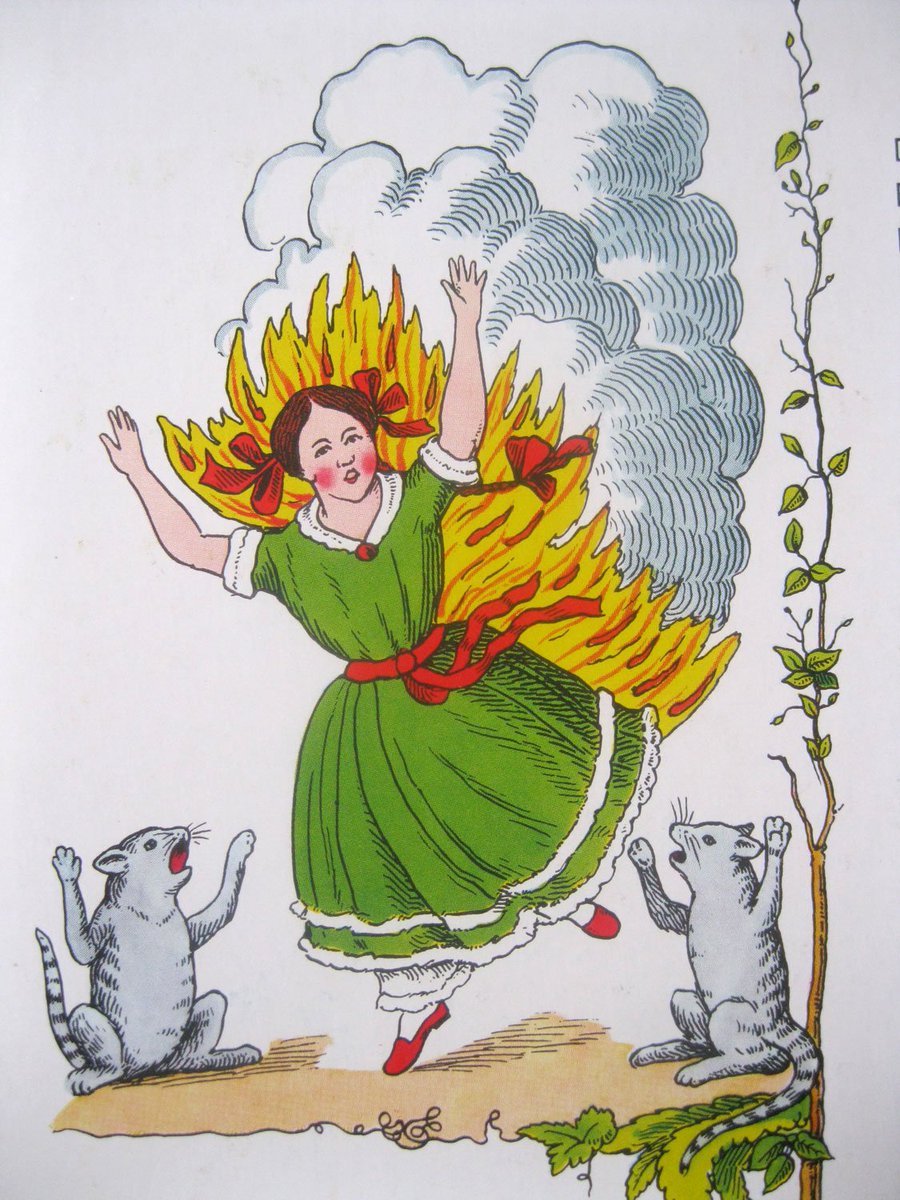
Mark Twain, himself a man of black humour, actually translated the collection as Slovenly Peter (1935). These days, the legacy of Struwwelpeter can be seen everywhere, from name-drops in TV shows like The Office and Doctor Who, to Tim Burton’s Edward Scissorhands and most recently, Salad Fingers. Personally, we’d love to see him get a Halloween Netflix special.
Speak German? You’re in luck! Looks like there’s a 1950s adaptation that’ll give you nightmares for days…
Sleep tight!




